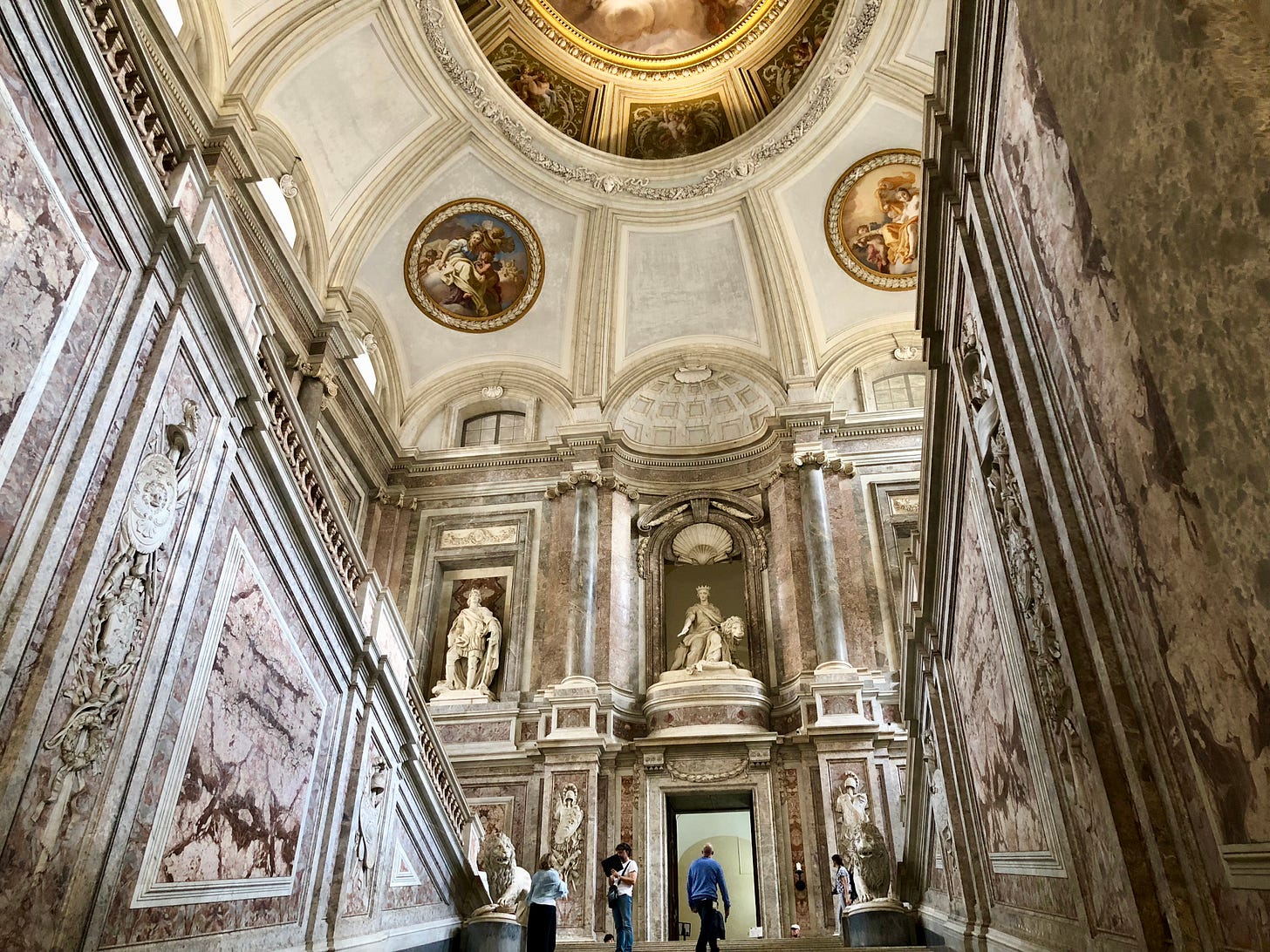Let them eat sfogliatelle
Revolution inside the world's largest palace
History nerd that I am, I love looking at other hinge points in history to make sense of where we are now. Change is constant, but periods of true transformation feel different. We are living through one now and however rocky, it is not (yet) like the revolutions of the late 1700s. The American and French Revolutions overthrew their royals, but the Neapolitan Revolution of 1799 failed because Queen Maria Carolina made sure of it. The Neapolitan queen’s ferocity in putting down the revolution came from having seen the death of her beloved sister, Marie Antoinette.
Among the many ‘undiscovered” treasures of Southern Italy, the Royal Palace at Caserta is among the most astonishing. Revolutions were often brewing in Naples which made inland Caserta a better location for the Kingdom of the Two Sicilies’s main palace. It looks like a much larger version of the Palace at Versailles and occupying over 1 million meters of space, it is, in fact, the world’s largest palace. It contains apartments and offices for the royal family and their entire administration, a library, museum, opera house, military barracks, and university. An aqueduct was built just to supply water to the many fountains in its English gardens. A colony of silk weavers from France was established next to the palace to feed the unending need for curtains, banners, and dresses.
As a visitor to Caserta, your first hour in the palace will be spent feeling awestruck by the size and splendor of it all. (Needless to say, wear comfortable shoes.) But luxury often lacks soul and can only carry you so far. I felt this way in the Doge’s Palace in Venice and at the Vatican Museum. At a certain point, the dizzying effects of these places numb you out. You notice that your feet hurt, or that it’s too hot, too cold or your stomach is rumbling. This is why I love to attach to a person and let their story activate the historic spaces as I search for them in the rooms they once inhabited. At Caserta, go looking for Maria Carolina.
The daughter of the Empress of Austria, Maria Carolina and her sisters were strategically married off to consolidate power in Europe. Her husband Ferdinand was Spanish, but raised in Naples, a city he adored. He became known as Re Lazzaroni, the beggar king, because he was only interested in hunting, fishing, and even selling his fish alongside the common people of Naples who loved him back just as much. In his opera box at the palace he ate spaghetti with his hands. He spoke only Neapolitan, the local language. Then the Tuscan dialect, what we know today as Italian, was only spoken at court and in literary circles. Maria Carolina and Ferdinand met for the first time, each about 16 years old, at Caserta.
Maria Carolina has been characterized by many of her contemporaries as ruthless. She became the defacto ruler of the Kingdom due to her husband’s disinterest and because she had to expel Bernardo Tanucci, the advisor who purposefully cultivated Ferdinand’s distractions so he could exert his own power. She was forced to manage multiple eruptions of Mount Vesuvius, the execution of her sister Marie Antoinette, and a revolution.
The life of Maria Carolina has been reimagined by author Diana Giovinazzo in her new book “Antoinette’s Sister”. Diana first become familiar with Ferdinand and while learning more about him began to wonder…who was this man’s poor wife?
On February 17th at 8pm EST, I’m hosting an online conversation with Diana to discuss bringing this forgotten historical figure to life. If you’d like to join us, just send me an email at danielle@feastonhistory.com. (I haven’t yet created the Zoom invitation!)
And to learn more about the palace at Caserta, join me for my class “Art & Architecture of Southern Italy” on Friday January 28th at 5pm EST. The class will be recorded so if you can’t join us live, it will be available for rewatch for 2 weeks.







